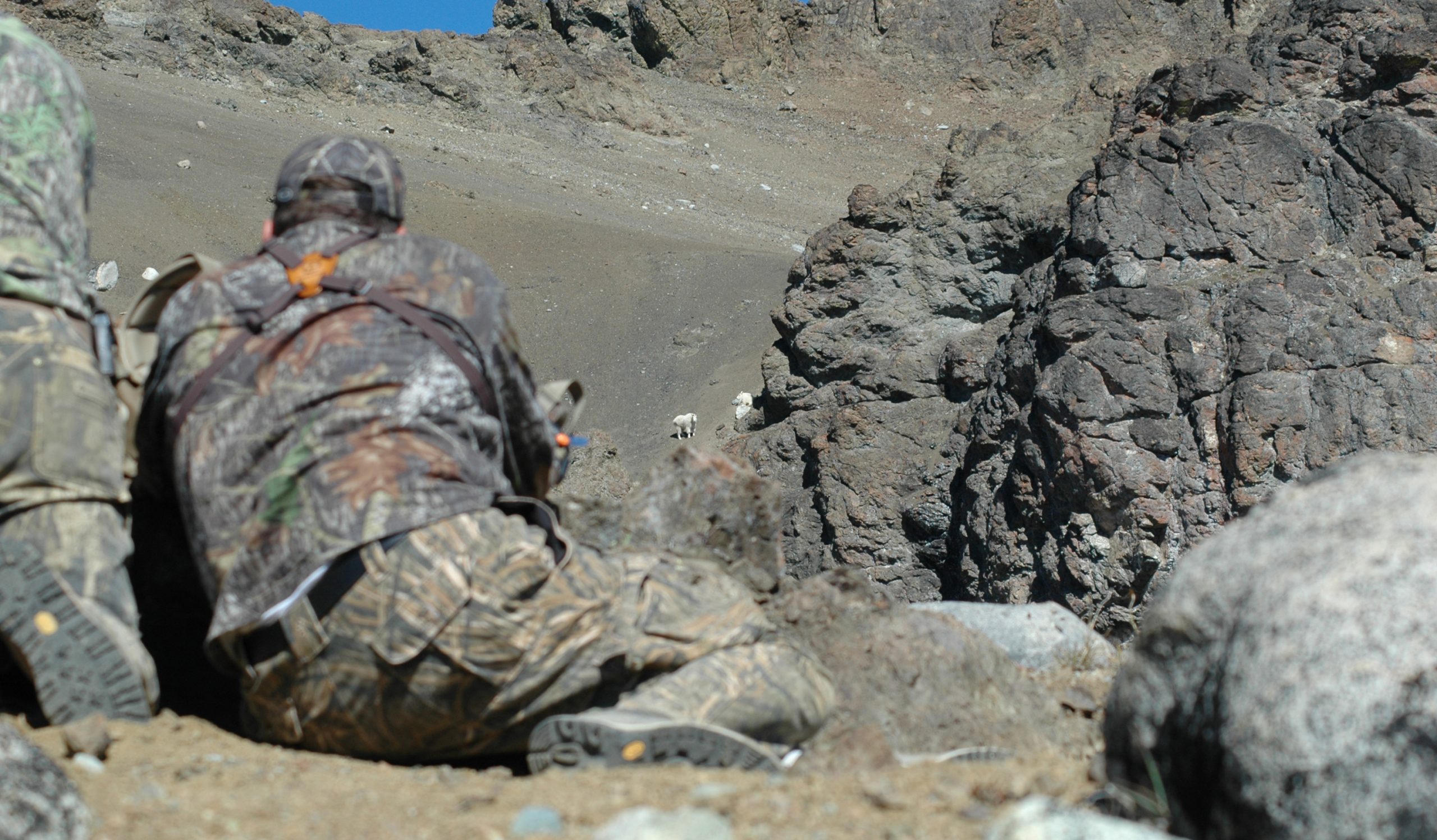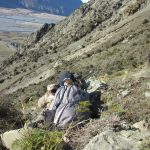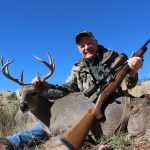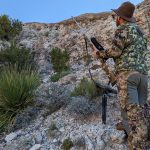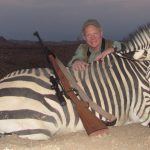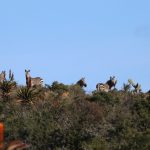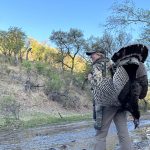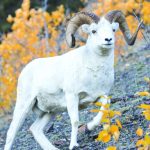Rocky Mountain goats are magnificent game animals and challenging to hunt.
In the grand scheme of things, hunt plans going awry isn’t particularly important. But, in the spring and summer of 2020, I’m sure most of us saw a lot of carefully-laid plans crumble into viral-ridden dust. It was late May when I got an unexpected surprise: I drew a Rocky Mountain goat tag in Montana, north of Yellowstone Park. This would be great news in any year, but it was especially welcome in this year of pandemic panic.
I made a lot of mistakes when I was young, but among the smart things I did was to start applying for hard-to-draw permits when I was still in my twenties. That was before preference points and bonus points. So, when these systems came in, I was often in on the ground floor. Mind you, in the 1970s I couldn’t afford to apply for all the permits I wanted, but I started with desert sheep in Arizona and Nevada. I still haven’t drawn in Nevada, but I drew in Arizona–thirty years later!
Over time, I added other applications, but I wasn’t systematic. Sometimes I couldn’t afford the downstroke (which is refunded if you don’t draw). Other times I just forgot. So, in 1991, I did another very smart thing: I threw my applications in with United States Outfitters (USO) out of Taos, New Mexico, when they started the first-ever computerized tag application service. Today there are several such services. I can’t compare them because I’ve stayed with USO, but I’m certain that using such a service gives consistency, and for sure has paid off: Three sheep tags, two Shiras moose tags, three Arizona elk tags, and more.
I don’t apply everywhere for everything, but I’ve been in the Montana goat draw since 1991. So, twenty-nine years later, out of a very gray sky, our mail carrier brought a surprise.

I’ve hunted the Rocky Mountain goat up in British Columbia several times, so I don’t really need another one. I don’t apply widely for our big white goats, but I’ve stayed in the Montana draw for two reasons. Both are weird and personal but, so long as our reasons make sense to us, who cares if they seem rational to anyone else?
In 1990, Jack Atcheson Jr. and I hunted bighorn sheep in one of Montana’s high, rough “unlimited permit” areas, a charming and aptly named place called Froze to Death Plateau. On one side the rim drops to a precipitous face, and we watched several goats cavorting happily on near-vertical rock. They gave us a wonderful show, and I thought it would be cool to hunt there.
It got more interesting when I learned that these were original, native-range goats. The Rocky Mountain goat has been successfully introduced into suitable habitat in many areas, including Colorado, Nevada, Oregon, Wyoming, and the Black Hills, and has done well. However, the Yellowstone Park region is pretty much the southern extent of their natural range. So, in the Lower 48, goats are native only to western Montana, Idaho, and Washington’s Cascades. This doesn’t matter; goats are goats, but a native-range Lower 48 goat sounded especially fun. I stayed in the draw, and now I have a permit.
At this writing the hunt is two months out, so my focus is on getting in shape and, of course, deciding on the perfect rifle and load. I have no idea what the hunt will be like. Maybe we’ll see goats, maybe we won’t…but I expect we will. I’ve hooked up with Ryan Counts of Dome Mountain Ranch, a young horse outfitter near my hunt unit. I’ve hunted goats both ways, by horseback and purely on foot. The older I get, the more interesting horse hunts become. However, my experience has been that a lot of goat country is too rough for horses. Sooner or later you have to tie the horses and climb.
So, there are trade-offs, but I doubt this goat hunt will be significantly different from the goat hunts I’ve done in British Columbia. Typically, I expect goat hunting to be more successful than sheep hunting. In areas where both species occur, goats are generally not as numerous, but are more stationary. Older billies are likely to hang out in a certain area, usually rough and steep, that has a bit of grass (they don’t need much) and security. Find a billy and figure an approach and your chances are pretty good, especially if you can find a way to come in from above.
There are challenges. Good goat country often starts where sheep country stops! Elevation doesn’t matter so much, but goats thrive in cliffy stuff where sheep won’t tread. Before planning an approach, you have to find a goat in a spot where recovery is safely possible. Goats are tougher than sheep. If strength remains, even a well-hit goat will drive for the nastiest, most vertical escape.
A couple of years ago, Donna and I were hunting goats with Ron Fleming’s Love Brothers and Lee outfit in northern B.C. Her goat, a fine billy, was down on gentle shale. And then it made one final kick and started to roll…end over end, for a thousand yards! We got lucky; after just a few revolutions the steep slope was mostly grass. Although the lovely white coat wasn’t white anymore, the horns were intact. In Central B.C.’s Chilcotin Range a friend of mine shot a goat perfectly in a little saddle. We watched in horror as it started to roll…and then slid under a glacier! We recovered it with great difficulty, but one horn was broken off at the base and we never found it.
An older billy can be a large animal, up to three hundred pounds. However, it is strength, not size, that makes our goats tough. Also, they are slab-sided, thin through the shoulders. The answer isn’t a bigger gun. I’m perfectly happy with a .270 or any 7mm, but it’s best to shoot on the shoulder to break bone, and I want a bullet that will open up and do damage, not just punch through. And, no matter what the first shot looks like, be prepared to shoot again quickly. There will be dangerous escape cover nearby, and your goat will head there if it possibly can.

The other thing about our Rocky Mountain goat: They are very devil to judge, much more difficult than any sheep. Unlike sheep, both billies and nannies have similar horns. The first challenge is to sex them. Nannies can have longer horns, but bases are thinner. Truth is, this is very subtle! Because of this, both sexes are almost always legal, and there’s no shame in taking a big, lone, long-horned nanny. But the goal is a mature billy and it’s not easy. Billies are often alone, and frequently will have a yellowish cast to the coat, but this is not consistent. Male sex organs are usually obscured by long hair, so the only surefire visual evidence of sex is: Billies have a black, pad-like gland at the rear base of the horns. With binoculars you better be close, but the black gland will usually stand out against the white hair through a good spotting scope.
Determining sex is only half the problem, and not the most difficult half. Accurately judging size is worse. The Rocky Mountain goat got seriously cheated in the horn department. Fortunately, the gorgeous, flowing white coat is at least half the prize. A billy is “shootable” at something over eight inches. Only an inch of horn differentiates OK from good, and it’s only another inch to spectacular! This is complicated by the fact that horns are in synch with body and head size. A young, lone billy will fool you (as will a lone mature nanny). There is no guide or hunter with significant experience who hasn’t misjudged a goat. Fortunately, it’s a matter of pride, not a legal issue.
Because of visibility, specific habitat, and the ease of determining legal animals, goat hunting is fairly successful, and a lot cheaper than sheep hunting. But goat hunting is just as difficult as sheep hunting, usually steeper, and often downright dangerous. And, the Rocky Mountain goat is a uniquely North American animal, with no close relatives anywhere in the world. Standing on a lonely crag, wind blowing his coat, a billy is magnificent. I look forward to hunting him in Montana. I’ve waited a long time for this tag.


